Nubian Archery
The Land of the Bow – Nubian Archery
There was a land to the south of Egypt that was recognized as “the land of the bow” for good reason. The archer’s that came from this area were renowned for their skill with the bow and arrow. This land is known today as Nubia. It encompasses much of present-day Sudan and the southern-most portion of modern Egypt. This area was the cradle of many civilizations and empires that co-existed with their powerful Egyptian neighbors to the north. These empires include the likes of the Kingdom of Kerma and the Kingdom of Kush. These kingdoms would continually produce very skilled archers, as the Egyptian dynasties were eager to include them in their own armies. This article explores Nubia and Nubian archery.
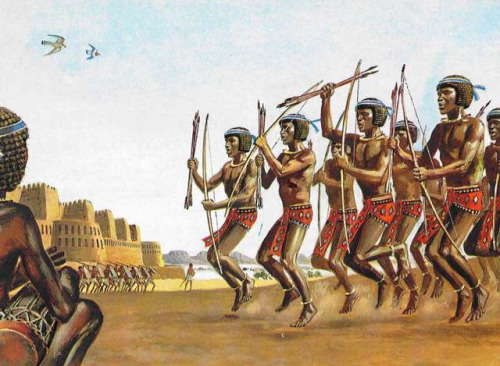
Mercenaries of the Bow – Nubian Archery
Ta-Seti was the name given to the area of Nubia by the ancient Egyptians. “Ta-Seti” means “land of the bow”. There was indeed good reason for Nubia to be called by such a name.
Archery in Nubia goes back thousands of years. Nubian archers are depicted in rock art from the late stone age (Neolithic, approximately 10,000–4,500 BCE). Archery was especially important for hunting during these prehistoric times.
Other than metals such as copper and gold, Nubia’s most traded and valuable commodities came from the hunt, typically with the bow and arrow. This included a wide variety of animal hides and ivory.
Their skill with the bow and arrow had impressed the Egyptian elite and the Nubians were recruited into the ranks of the Egyptian armies.
The first recorded instance of the Nubians being used as mercenaries was by Weni, a general of the Sixth Dynasty of Egypt during the Old Kingdom of Egypt, about 2300 BC.
Nubian archers would be a feature of the Egyptian military for thousands of years, and eventually, the Nubians themselves would conquer Egypt in the third intermediate period, ruling most of Egypt proper from 744 to 656 BC. The time of the Nubian rulers was known as Nubian Dynasty, the Kushite Empire, or the Black Pharaohs. The Nubians readily adopted Egyptian writing, art, and culture.
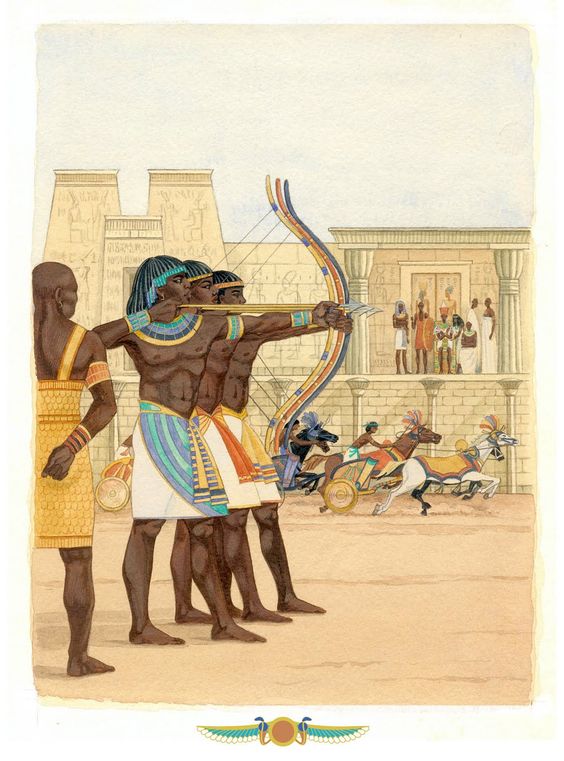
The Nubian Bow & Arrows
Across the oceans of time, the Nubian bow had evolved from a simple self bow to a smaller composite version over the centuries and millennia. The form of the Nubian bow on rock paintings takes the shape of a self bow of approximately 110–150 cm in length. The timing of the exact transition between this self-bow, longbow, and the shorter composite is not currently certain. The Greek historian Herodotus describes this bow in his famous work “Histories” and his description indeed matches various pictograms and art related to the bow from this time.
The early Nubian bow, being a self-bow, comprised of a single piece of wood, was not quite like the English longbow. The tips of the bow are recurved. They bend away from the archer if they were to hold the bow in their hand unstrung. This tip curvature may have been accomplished by steaming the wood and bending it on a form.
The length of the bow is described by Herodotus to be four ells or roughly 200 cm. However, depictions of Nubians holding the bow on rock-wall carvings, show it to be about 150 centimeters when strung.
Like many other self-bows of the Africans, the Nubian bow did not have nocks for the string. Instead, the string was secured to the tips by being tied to the bow via leather straps. It seems that the designers of these early bows did not want to weaken the structure of the tips.
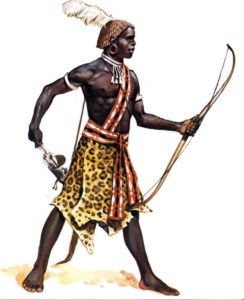
Nubian Archery and the Composite Bow
It was during the post-Meroitic period (approximately 350 to 600 AD) that a composite bow came into widespread use. A composite bow was already known and used, however, this seems to be a time when it became widely distributed.
Archeological specimens of the Nubian composite have a length of about 100 cm. These bows are of the type most associated with the Eurasian steppe nomads, yet a clear example of a composite reflex bow is evident in Ancient Africa.
As with the self-bow, no nocks are present and the string is tied to the limb tips. The core of the bow is wood. There are plates of horn on the belly of the bow and sinews are glued to the back of the bow.
Nubian Archery Technique
Much like the technique of drawing a bow that was employed by the steppe nomads and their composite bows, the Nubians likely used a similar thumb draw. How do we know this? Thumb rings! Many thumb rings of the cylindrical variety are found in burials alongside other archery equipment and the bows and arrows themselves.
Some rings have been found still on the left hand of buried Nubian archers. This may be because thumb rings were used to draw the bow, as well as an arrow rest. The arrow may have been rested on the thumb of the bow hand.
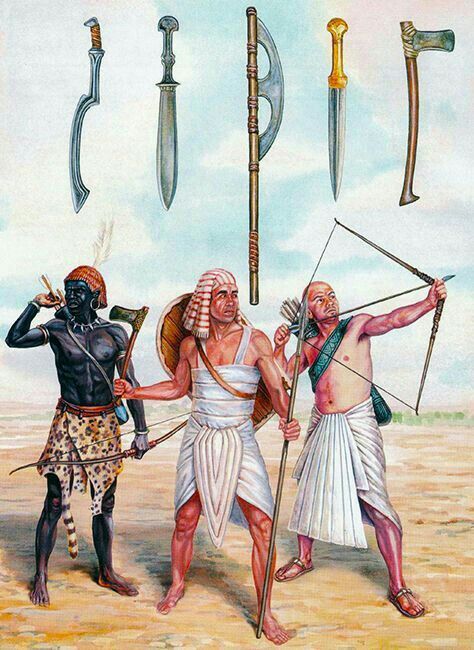
Military Encounters & Nubian Archery
The Nubians were always a militaristic people. Powerful neighbors such as Egypt and Assyria kept them on their toes. The military forces of Nubia centered around infantry, primarily the archers. Mounted warfare, on horses and even Elephants, as well as chariotry gained prominence in the Meroë period (300 B.C. to 350 A.D.)
The Nubians were under the dominion of Egypt during the New Kingdom, and there was much trade and intermingling of the populations of Nubia and Egypt during this time. The Nubians even took to worshipping some of the Egyptian gods such as Amun. Egyptian art, architecture, and much material culture were absorbed by Nubia.
However, as Egypt weakened and entered its third intermediary phase, the Nubians would take hold of the reigns of power in Egypt, forming the 25th dynasty. They once more reunited upper and lower Egypt as well as their own lands to the south. They would rule from approximately 744 to 656 BC.
Eventually, the growing influence of the Kingdom of Kush and the aggressive Assyrian war machine would put them on the path towards war with each other. The Assyrians would drive out the Nubians and briefly take control of the Nile for themselves.
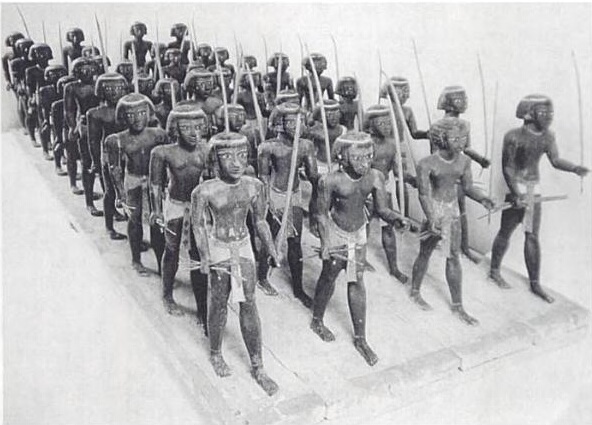
The Infamous Models of Nubian Archers
What did the infamous Nubian archers look like? Well luckily for us the Nubians, as well as their Egyptian neighbors were the artistic type. They made pictures, carvings, and models of many things. Not just of their gods and Pharoah but of simple everyday life.
One of the more interesting finds in Egyptian archeology, as it relates to Nubian archery, are the wooden models of Nubian archers. They were found in the tomb of Mesehty who served as a government official in Asyut during the Middle Kingdom (2040 to 1782 BC).
Among his trinkets that would accompany him into the afterlife was a spectacular wooden model of Nubian archers on the march. They are wonderfully painted, highly detailed, and well preserved. They are in stride as if marching in a parade. The archers clutch a bow in one hand and a bunch of arrows is clenched in their other hands. They wear red and white cloth skirts a necklace and a hairband. This apparently was quite stylish if you were a Nubian archer back in the day.
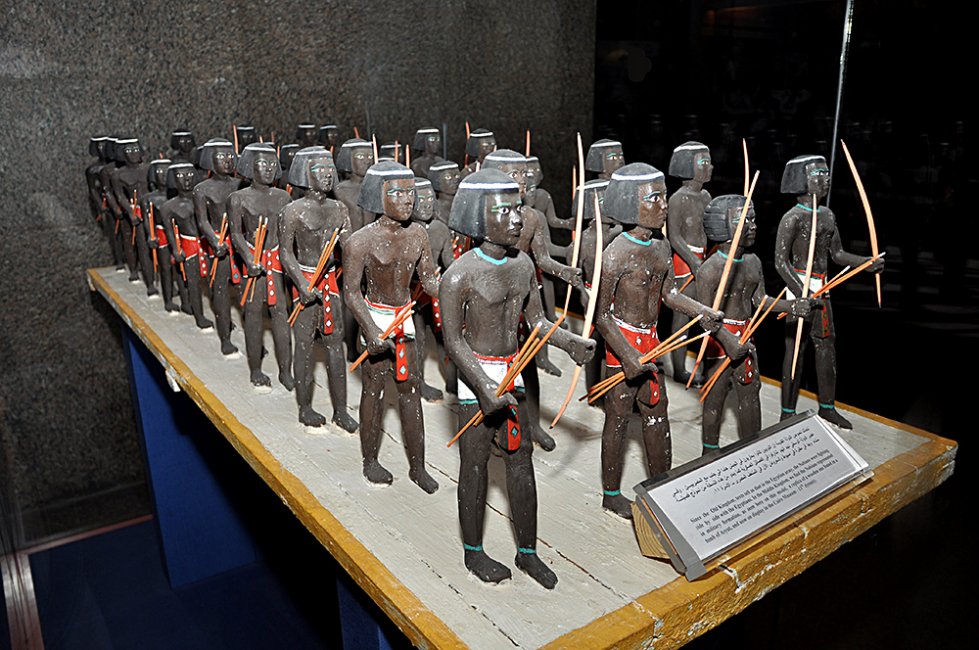
References:
NEW INSIGHTS INTO
NUBIAN ARCHERY
Łukasz Zieliński
The Histories
Herodotus,